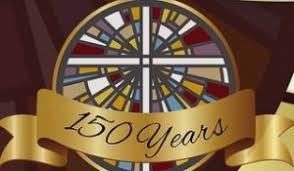 | Simon was a fisherman in Galilee. His brother Andrew introduced him to Jesus. Jesus changed his name to Peter, because He said that Peter would be the rock on which He would build his church. Although Peter denied knowing him when Jesus was arrested, he became the leader of the Apostles. He founded the church in Antioch in 37 A.D. and was in charge of the church there for many years. The Emperor Nero used the Christians as a scapegoat after the great fire in Rome in 64 A.D., and Peter went there to help the Christians who were being persecuted there. Both he and his wife were imprisoned and tortured, and he was sentenced to be crucified. He did not feel worthy to die as Christ had died, so he asked to be crucified upside down. He was martyred in 67 A.D. Peter was the first Bishop of Rome, and the Catholic Church honors him as their first Pope. He is buried under the Basilica of St. Peter in the Vatican in Rome.
Portrait of Peter from http://www.atlanteanheart.com | | | |  | Andrew was the first disciple. He and his brother Simon (Peter) were followers of John the Baptist, and Andrew was there when John introduced Jesus as the "Lamb of God." Andrew followed Jesus to Galilee, where he introduced him to his brother. Peter and Andrew followed Jesus from that time forward. After Pentecost Andrew was a missionary to the people of Eastern Europe who lived near the Caspian Sea. He brought the Good News to Romania, Georgia, and Russia, and preached in Byzantium (Istanbul) where he was its first Bishop. Andrew was in northern Greece, at the town of Patras, when his preaching angered the King there. He was sentenced to be crucified, but did not wish to die in the same way that Jesus had. He was tied to a cross built in the shape of an X, and suffered for three days before dying in 60 or 70 A.D. His body was taken to Istanbul (Constantinople) in 357, where his remains were buried under the Church of the Apostles. After the city fell, his remains were moved to the Cathedral at Amalfi, Italy.
In the 10th Century, relics (some of Andrew's bones) were brought to Scotland. Relics were believed to carry the power of the saint, and Andrew is honored as the disciple who converted Scotland to Christianity and is honored as its Patron Saint. Andrew is also the Patron Saint of Russia, Romania, and Georgia.
Image of Andrew taken from http://mountainbarry.wordpress.com | | | |  | James was a son of Zebedee. Because there were two disciples named James, he is usually referred to as James the Greater. (This was probably because he was the physically larger of the two men.) He and his brother John were also brother disciples, and they came from the same village and were fishermen with Simon Peter and Andrew. Because of their fierce loyalty and faith - and hot tempers - Jesus called them the "sons of thunder."
James spread the Good News in Spain after Pentecost, but returned to Judea about 40 A.D. King Herod Agrippa (grandson of the Herod in the Christmas story) saw the Christians as a threat, and directed an oppressive persecution. James continued to openly preach the Good News, which resulted in his arrest and an order of execution. He was stabbed and beheaded in 44 A.D. James' martyrdom is the only one described in the New Testament, and he was the first of the disciples martyred for his faith. About 800 A.D. his remains were returned to Spain, where they are buried at St. James Church, Compostela, Spain. He is the Patron Saint of Spain.
Image of James the Lesser taken from http://truthbook.com/jesus/twelve-apostles/james-zebedee | | | |  | John was also the son of Zebedee, and became a disciple with his brother James. He became known as the "beloved disciple" and was the only one who stood by Jesus after his arrest. He was with Jesus' mother Mary at His crucifixion.
The Bible includes the Gospel of John, three epistles, and the Book of Revelation all written by John.
There is a story that the Roman Emperor Domitian had John thrown into a vat of boiling oil, but John was not harmed. He was then exiled to the island of Patmos for a year. He spent the rest of his life in Ephesus, where he died in 100 A.D. John is the only disciple who escaped martyrdom. A church was erected over his grave, which later became a Muslim mosque. The ruins of the basilica constructed by the Emperor Justinian, and the gravesite of John, can be visited today.
Image of John the Evangelist by Aiden Hart | | | |  | Philip was from the same place as Simon, Andrew, James and John and was called by Jesus the day after Simon became a disciple. He was married with three daughters when he chose to follow Jesus. He immediately told his friend Nathanael (Bartholomew) about Jesus, and he became a disciple, too.
After Pentecost Philip was a missionary in Greece and what is now Syria. Both he and another Christian missionary named Philip the Evangelist lived and worked around Hieropolis in Greece, and have often been confused. The disciple Bartholomew joined Philip in his ministry. Although Philip lived to an old age, he was crucified by Roman soldiers under the urging of the local Jewish heirarchy. Bartholomew was also sentenced to death but avoided execution. Philip's remains were later removed from Hieropolis and moved to Constantinople, and then to the Basilica of the Apostles in Rome. There has always been some doubt among historians as to whether these were actually the remains of Philip the Apostle or were really those of Philip the Evangelist. In 2011, archeologists reported finding the tomb of Philip the Apostle in Hieropolis. The design of the tomb and writings on the walls seem to prove that this is the true resting place of the apostle Philip.
Portrait of Philip by Peter Paul Rubens | | | |  | Bartholomew was from Galilee and is generally believed to also have been known as Nathanael, the disciple that Philip brought to Christ. After Pentecost Bartholomew's ministry brought him to India (perhaps with the disciple Thomas), Ethiopia, northern Greece, and western Turkey. He was preaching the Good News with his friend and fellow disciple Philip when both were arrested and ordered executed. Philip was crucified but for reasons that are not clear Bartholomew was ordered removed from the cross and released.
Bartholomew and fellow disciple Thaddeus are credited with bringing Christianity to Armenia. They are the Patron Saints of the Armenian Apostolic Church. Thaddeus is said to have healed the Armenian king, Polymius. Bartholomew instructed Polymius and converted him to Christianity. The king's brother Astyages and the other noblemen were deeply angered by this and, when this disciple of Christ refused to give up his faith, Astyages ordered Bartholomew's execution. It was a horrible death. He was flayed (skinned alive) and then crucified upside down.
The Monastery of St. Bartholomew in Armenia is said to have been built at the place where Bartholomew was martyred. Like many of the other apostles, his remains were moved from Armenia to Constantinople and then to Rome, where his body is now buried at the St. Bartholomew Church. Relics are also found at Frankfurt Cathedral in Germany and Canterbury Cathedral in England.
Portrait of Bartholomew by El Greco | | | |  | Matthew was a tax collector in Caperneum when Jesus called him to be a disciple. It is thought that he may have been part of the Jewish tribe of Levi, because that is the name used when the story of his calling is told in the Gospels of Mark and Luke The Pharisees were upset when Jesus and his disciples went to Matthew's house for a meal, because being a tax collector at that time was considered a very bad occupation. Jesus responded that He had not come to call the righteous, but to help sinners repent.
After Pentecost Matthew taught about Jesus in Palestine. He wrote the Gospel of Matthew in Aramaic, which was the local language that Jesus himself had spoken. There is reason to believe that the persecution of Christians by Herod Agrippa led him to leave and travel to Ethiopia and Persia. The circumstances of his death have been disputed, but it is generally believed that he was stabbed with a sword while preaching in Ethiopia and died of those wounds about 90 A.D. His remains are now believed to be buried at St Matthews Cathedral in Messina, Sicily.
Portrait of Matthew from http://www.biography.com/ | | | |  | Thomas is most remembered because he doubted the story the other disciples told of seeing the risen Lord. When Jesus appeared again, Thomas was able to touch the wounds in His hands left by the nails of the crucifixion, and feel the wound left by the sword that had been thrust into His side on the cross. Thomas then believed with all his heart. After Pentecost Thomas first preached in Palestine, but about 50 A.D. he sailed to India, where today on the Malabar Coast there is still a community of "Christians of St. Thomas." In 72 A.D. he was martyred. Some stories say that he was killed with a spear, while others say he was tortured and then burned alive. He was first buried in Myalapore, India, and like many disciples, moved multiple times before being returned to the Cathedral of St. Thomas there. Thomas is the Patron Saint of India.
Portrait of Thomas by El Greco | | | |  | James the son of Alphaeus is often called "James the Lesser." He was a close family member, perhaps a first cousin, of Jesus. James was the first Bishop of Jerusalem, and officiated at the first formal Christian church service, or Holy Mass. Even though they disagreed with and were afraid of James as the leader of the Christians in Jerusalem, he was known as "James the Just" among the Jews of the city. Despite their respect for him, in 62 A.D. the Pharisees captured him and threw him from the highest point on the Temple in Jerusalem. He survived the fall, so he was then stoned to death. His remains were eventually moved to Rome and are now buried at the Holy Apostles Basilica there.
James wrote the Book of James, which is described as a practical guide to living as a Christian. Martin Luther, however, was not impressed with this book and said that it was "an epistle of straw" and "of the dust" because it emphasized good works and not the Grace of God as the means to salvation.
Portrait of James the Lesser by Giuseppi Vermiglio | | | |  | Thaddeus is now more commonly known as Jude. He was James the Lesser's brother, so he was also a close family member to Jesus. There is a story that the king of Edessa fell very ill and asked that Jesus come and heal him. Jesus instead sent Thaddeus, giving him a cloth He had pressed against His face. Thaddeus visited the king and gave him the cloth. The king was healed and became a Christian. After Pentecost he is believed to have traveled through Mesopotamia for about 10 years before returning to Jerusalem. Thaddeus and the disciple Simon then spread the Good News in Libya and Persia, where Simon was martyred. He traveled to Armenia where he healed King Polymius of a mysterious deadly illness and converted him to Christianity. The king's brother and other nobles did not accept Christianity, and in about 65 A.D. Thaddeus (Jude) was beaten to death and then beheaded. His body was returned to Rome and buried under St. Peter's Basilica in the Vatican.
Portrait of Thaddeus by Anthony van Dyck | | | |  | Simon was from Canaan. The Eastern Orthodox church says that Simon was the Canaanite in the story of the wedding Jesus attended and at which he turned water into wine. In this version, Simon was so amazed that he left his home and new bride to follow Jesus. This story isn't commonly told in the European church. After Pentecost Simon reportedly traveled in Africa, Egypt, Persia and perhaps even Great Britain spreading the Good News. He may have been traveling with Thaddeus when he was crucified by a Syrian governor. His body was eventually entombed in the Altar of the Crucifixion at the Vatican in Rome.
Some historians believe that the apostle Simon was a brother of James the Lesser and referred to as Simeon, who took over as Bishop of Jerusalem after James' death. Still others suggest that Simon was actually a brother or half-brother of Jesus (He is known to have had a brother named Simon). This is all speculation, and whether these are historically correct, just myth or confusion because of the similar names is almost impossible to figure out.
Portrait of Simon by El Greco | | | |  | Judas Iscariot was a trusted disciple, who held the purse and kept track of the money for the disciples during Jesus' three year ministry. He is remembered for betraying Jesus and accepting thirty pieces of silver from Caiaphas, the high priest, to lead the soldiers to the Garden of Gethsemane, identifying Jesus by kissing him on the cheek. After he realized what his betrayal had caused, the Gospel of Matthew says he returned the payment to the priests and hanged himself in a field. This is the story that most of us know. In the Acts of the Apostles a slightly different story is told. In Acts 1:18 "Now this man acquired a field with the reward of his wickedness; and falling headlong, he burst open in the middle and all his bowels gushed out. "
This sketch of Judas betraying Jesus was taken from http://groundreport.com/judas-iscariot-saint-or-sinner/ | | | | After Jesus ascended into heaven, the disciples formally replaced Judas with Matthias, who was born in Bethlehem. He was the only disciple not personally chosen by Jesus.  Some sources indicate that he was actually Zaccheus, whose story is told in Luke 19. Matthias' ministry began in Judea, but he is reported to have traveled to Georgia (the present-day country that was once a part of the USSR) where he was stoned to death. Other sources say that he traveled through Ethiopia spreading the Good News and then returned to Judea where the high priest Annas (who had ordered the death of John) had Matthias stoned to death and then beheaded. Some sources indicate that he was actually Zaccheus, whose story is told in Luke 19. Matthias' ministry began in Judea, but he is reported to have traveled to Georgia (the present-day country that was once a part of the USSR) where he was stoned to death. Other sources say that he traveled through Ethiopia spreading the Good News and then returned to Judea where the high priest Annas (who had ordered the death of John) had Matthias stoned to death and then beheaded.
Helene, wife of Constantine I, is said to have had Matthias' remains transported to Rome and from there they were moved to the St. Matthias Abbey in Trier, Germany. The only disciple interred in northern Europe, the monastery was a favored pilgrimage destination during the Middle Ages.
Portrait of Matthias taken from http://stbrigidccd.com/apostles/matthias.htm |
|











